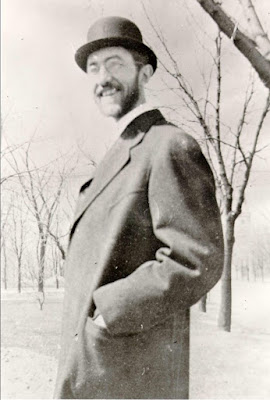From about 1903 to 1917, the Ohio State University had a fresh water marine biology laboratory at Cedar Point. Notes from Dr. Norbert Lange indicate that the lab was located at approximately 2029 Cedar Point Chausee. George Feick was selected to construct the lab. G.A. Boeckling, Jacob Kuebeler, and attorney W.E. Guerin, Jr. met with officials of the Ohio State University, to negotiate the details of the lake laboratory. The property for the lab was donated by the Cedar Point Pleasure Resort Company. The lake laboratory was two stories high, and faced the lake. Students were to study the insect and aquatic life of the region. A map by Professor E.L. Moseley was published in the Sandusky Register to show the location of the Lake Laboratory.
In 1904 the staff included professors of botany, zoology and entomology. Instructors came from Ohio State University and other universities around the U.S. Students were offered outings to various sites in the area, including Lakeside, the Blue Hole in Castalia, the Marblehead Life Saving station, the Lake Erie Islands and the gypsum beds in Ottawa County. Some students stayed at the laboratory building, while others boarded in Sandusky for a fee of $3.50 to $4.50 a week. Professor E.L. Moseley from Sandusky High School gave a lecture on “Physiographic Features of Sandusky Region” during one of the first summer sessions at the Lake Laboratory.
 |
| Professor E.L. Moseley |
The American Microscopical Society held its annual meeting at Cedar Point in 1905, and attendees visited the Lake Laboratory. Members of the Ohio Academy of Science were invited to all the lectures. On July 5, 1905, a public lecture was given by the American Microscopical Society at Carnegie Hall, inside the Sandusky Library.
Professor Henry B. Ward from the University of Nebraska gave the address at Carnegie Hall, titled “The Relation of Animals to Disease.” Some of the topics he covered were yellow fever, typhoid, and leprosy, and how these diseases may have been spread by insects.
In 1918, Ohio State University moved the Lake Laboratory to South Bass Island. Since 1925, the laboratory has been known as the Franz Theodore Stone Laboratory on Gibraltar Island, not far from Put in Bay on South Bass Island.

 this blog
this blog








No comments:
Post a Comment